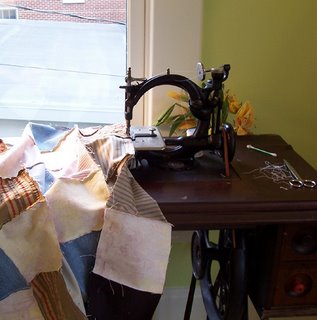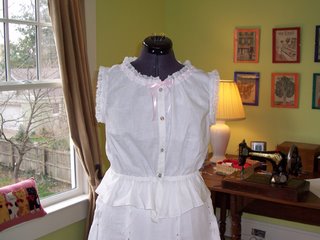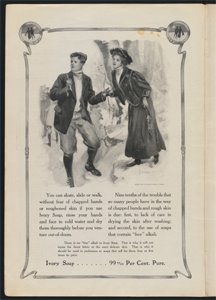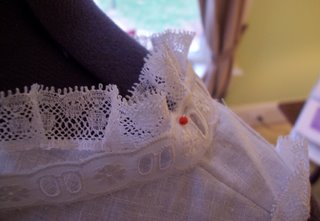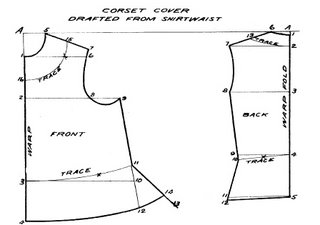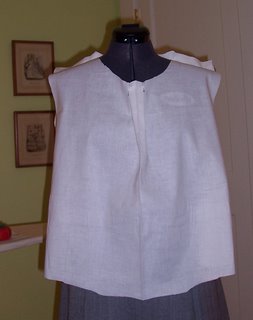"It's impossible to do around the seams, though, so you have to stop near these eges and hand hem them afterwards. Not terribly efficient. Once you have a well-fitting pattern, might as well hem each piece BEFORE you seam the pieces."
So I asked the folks on TreadleOn, a super-duper online community for those who use treadle machines. Always warm and helpful, several Onions gave me tips on how they deal with the issue. I've reproduced several of them here, with a few edits for context.
- The way my grandmother taught me to do this is to clip a triangle off the seams with the widest point being at the seam itself, and the point being about 1/4" up into the seam. That leaves less fabric for the hemmer to have to turn and stitch, and works about 99% of the time. On lightweight fabrics, batise or light cotton, it works 100% of the time because there isn't that much bulk there in the first place. By just snipping 1/4", almost the entire snipped area is inside the hem, and if you press the seam open before running it through the hemmer, it's even less bulk.
If you're doing heavier than light fabric, you should hand-crease the narrow hem at the seam so it will feed through the attachment properly.
Marilyn S.SE TX - I'm not sure how they did it in the bad old days, but when I cross seams with my narrow hemmer, I first make sure those seams are trimmed to reduce bulk. I usually cut a triangle from each one, such that it tapers from regular width to nothing at the raw edge. Then when I am sewing along and get close, I stop and remove the hem from the "curl" of the foot. Using my fingers, I fold the hem as narrow and as flat as I can over the seam, then stitch across it as neatly as I possible, with the foot riding totally on top of the hem. Once past the seam, I stop and re-insert the fold into the "curl" and proceed to the next obstruction.
Jennifer, Calgary, AB - I usually [do] the tuck[ing] or hem[ming] before sewing the seams. Recently I tried it the other way on a petticoat and it just didn't work. I usually finish my seams by pressing the seam open and then turning each seam allowance under and stitching down the folded edge. Not period authentic, but it looks nice and wears well.
Annie, Pennsylvania



